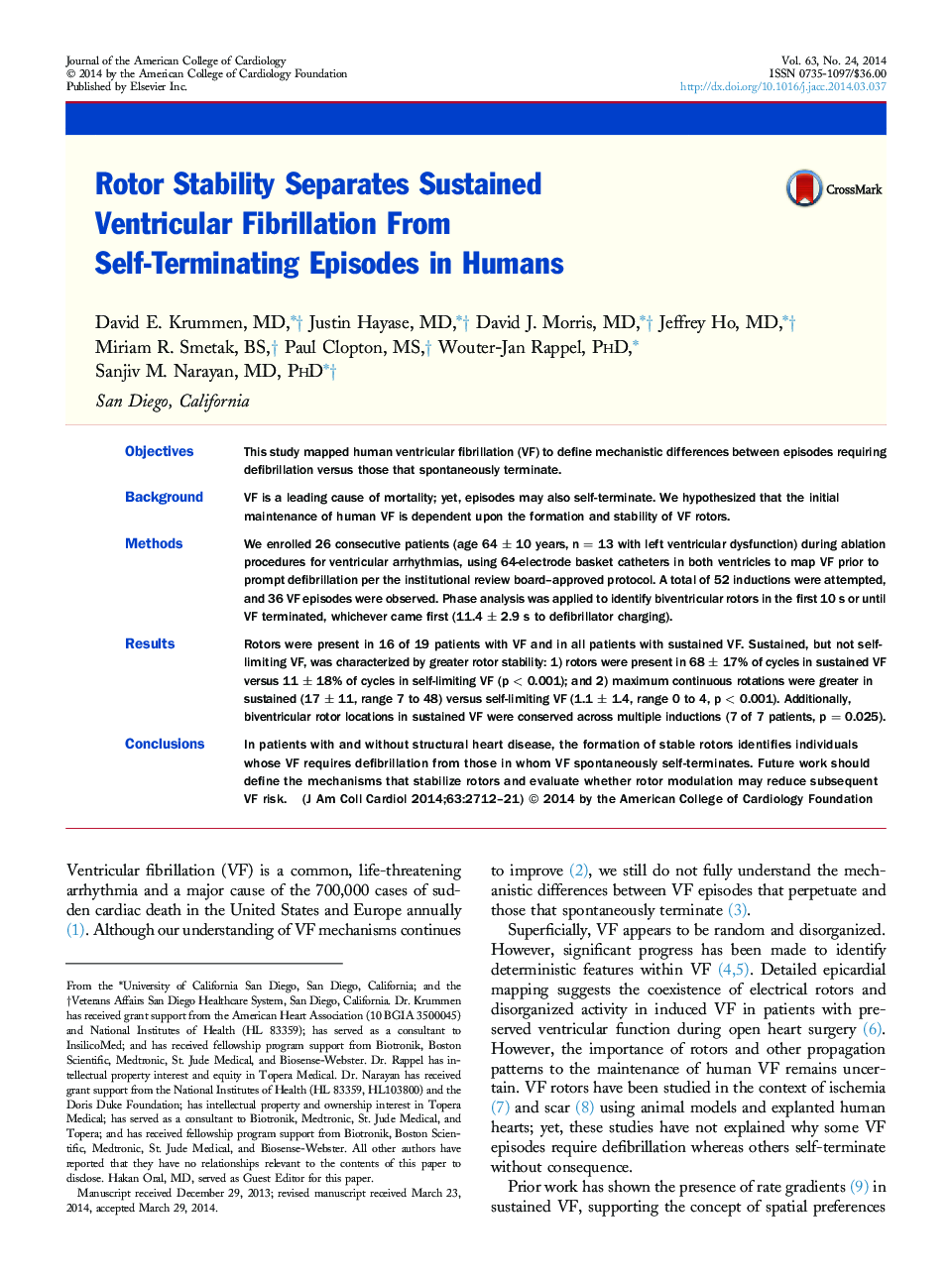| Article ID | Journal | Published Year | Pages | File Type |
|---|---|---|---|---|
| 2944137 | Journal of the American College of Cardiology | 2014 | 10 Pages |
ObjectivesThis study mapped human ventricular fibrillation (VF) to define mechanistic differences between episodes requiring defibrillation versus those that spontaneously terminate.BackgroundVF is a leading cause of mortality; yet, episodes may also self-terminate. We hypothesized that the initial maintenance of human VF is dependent upon the formation and stability of VF rotors.MethodsWe enrolled 26 consecutive patients (age 64 ± 10 years, n = 13 with left ventricular dysfunction) during ablation procedures for ventricular arrhythmias, using 64-electrode basket catheters in both ventricles to map VF prior to prompt defibrillation per the institutional review board–approved protocol. A total of 52 inductions were attempted, and 36 VF episodes were observed. Phase analysis was applied to identify biventricular rotors in the first 10 s or until VF terminated, whichever came first (11.4 ± 2.9 s to defibrillator charging).ResultsRotors were present in 16 of 19 patients with VF and in all patients with sustained VF. Sustained, but not self-limiting VF, was characterized by greater rotor stability: 1) rotors were present in 68 ± 17% of cycles in sustained VF versus 11 ± 18% of cycles in self-limiting VF (p < 0.001); and 2) maximum continuous rotations were greater in sustained (17 ± 11, range 7 to 48) versus self-limiting VF (1.1 ± 1.4, range 0 to 4, p < 0.001). Additionally, biventricular rotor locations in sustained VF were conserved across multiple inductions (7 of 7 patients, p = 0.025).ConclusionsIn patients with and without structural heart disease, the formation of stable rotors identifies individuals whose VF requires defibrillation from those in whom VF spontaneously self-terminates. Future work should define the mechanisms that stabilize rotors and evaluate whether rotor modulation may reduce subsequent VF risk.
